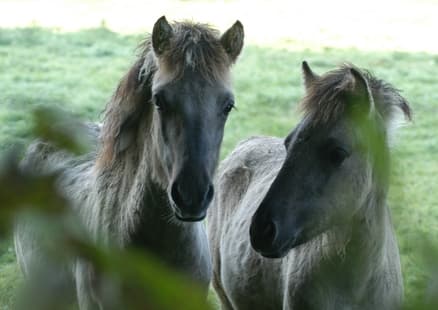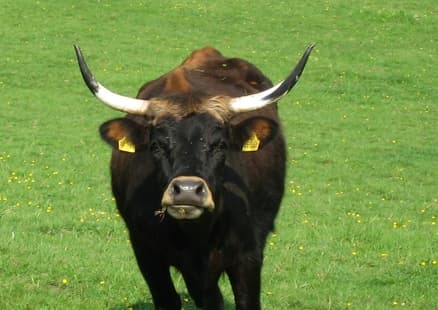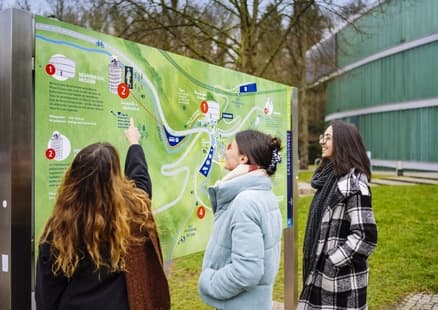In the past, they served the Neanderthals as a source of meat, hides and other tools: bison. These animals, which are rarely found today, live together with replicas of aurochs and tarpans (wild horses), which became extinct in Europe hundreds of years ago, in the large and extensive Ice Age Game Reserve. You can discover them on a walk along various circular trails.

Keeping rare animals from the Ice Age in a species-appropriate way is the main task of the Ice Age Animal Park, which was founded in 1935 by the Neandertal Nature Conservation Association. The aurochs and tarpans are the ancestors of today's domestic cattle and horses, so that the animals living today carry the genetic material of the extinct animals. By crossing original breeds, animals could be bred that are very similar to their ancestors.
Strictly speaking, the Ice Age Animal Park is actually several large and extensive outdoor enclosures. The first enclosure, which is home to the tarpans, can be reached on foot from the Neanderthal Museum via the Art Trail in around 15 minutes. From here, you can walk around the enclosure on two different circular routes.

The valley trail runs alongside the River Düssel, is flat and suitable for wheelchair users and pushchairs. You will pass the tarpan and bison enclosures. However, as the enclosures are very large and the animals are wild, you may not be able to find them during your visit. We recommend visiting early in the morning or at dusk at the feeding stations, as the probability of seeing the animals is higher then.

The large circular route is steeper, leads partly through the grounds and is therefore not barrier-free. You will pass all the enclosures on this path. However, as the enclosures are very large and the animals are wild, you may not see them during your visit. You are more likely to see the animals at dusk or early in the morning during feeding time. As this is a nature reserve, please stay on the paths and protect the animals and plants in the valley!

Fancy a longer hike? The neanderland STEIG takes you on almost 240 kilometres in 17 stages around the entire district. You can find more information and other exciting excursion tips on the neanderland website.
Support the Neandertal Nature Conservation Association and the Ice Age Animal Park by sponsoring one of the animals.
If you are interested, please contact:
Naturschutzverein Neandertal e.V. (Neandertal Nature Conservation Association)
Moritz Stöcker
Düsseldorfer Str. 3
40822 Mettmann
Tel: 02104.25273
Email: info@gutbachelsberg.de
Kreis Mettmann (District of Mettmann)
Eiszeitliches Wildgehege Neandertal
Hegemeister
Thekhauser Quall 2
40699 Erkrath
Tel. 0173 2817352
Email: wildgehege-neandertal@kreis-mettmann.de

Other highlights await you in the Neandertal World of Discovery, such as the Neanderthal Discovery Site with the Höhlenblick tower or the Stone Age Playground. Located between Düsseldorf and Wuppertal, you can enjoy a varied day out here whatever the weather.